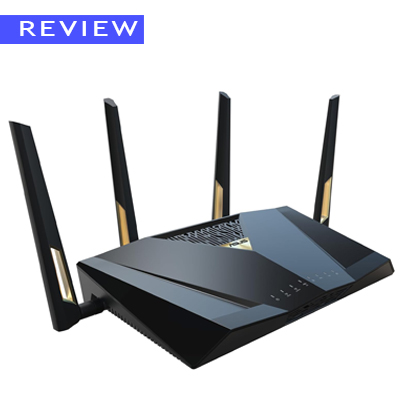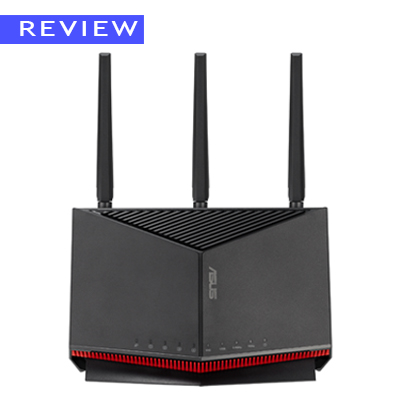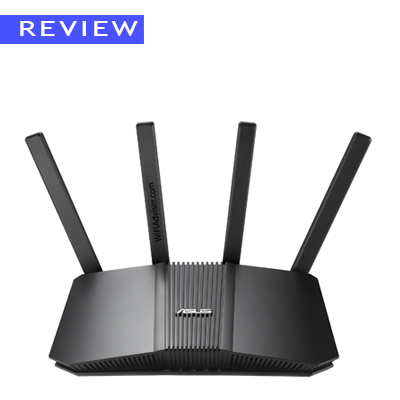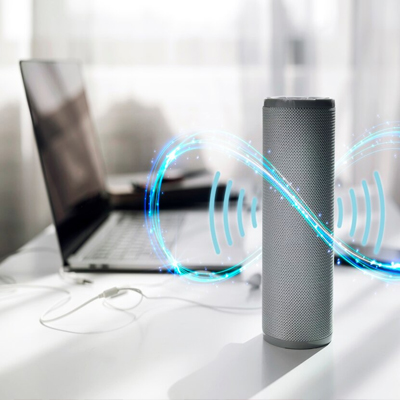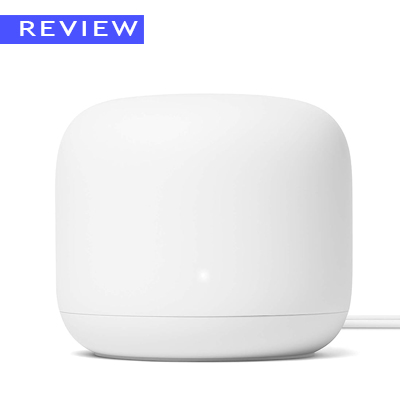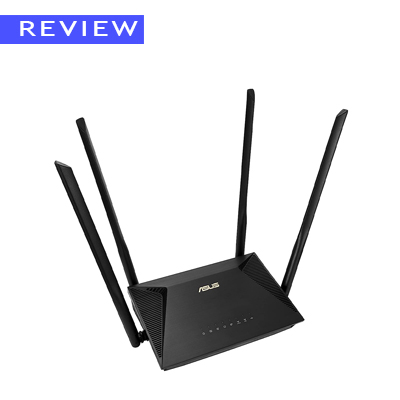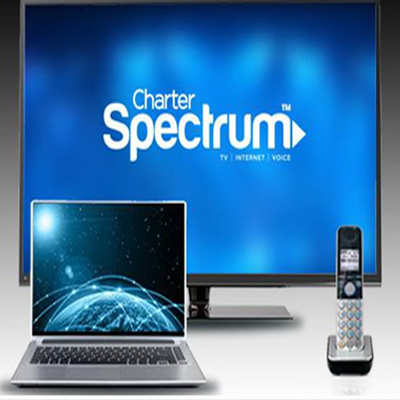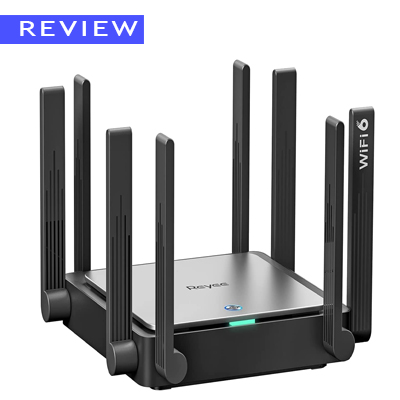- Filter by
- Categories
- Tags
- Authors
- Show all
- All
- Advance WiFi Articles
- After Installation Articles
- Before Installation Articles
- How to Setup
- Products Reviews
- Tutorial Post
- WiFi Router Choosing Articles
- All
- 10-20
- 150$ to 250$
- 250$ to 350$
- 350$ to 500$
- 4G vs 5G
- 4G vs LTE
- 4K/8K Streaming
- 50$ to 150$
- 5G
- add second wifi
- Advance WiFi Articles
- After Installation Articles
- Aluminum foil
- android saved password
- android wifi hotspot
- Archer AX10000 WiFi Router
- Archer AXE75
- Asus
- Asus AC1900
- Asus AC2600
- Asus AC2900
- Asus AC5300
- Asus AC68U
- Asus AC86U
- Asus AX5400 WiFi Router
- Asus AX55
- Asus AX55 WiFi Router
- Asus AX6000 WiFi Router
- Asus AX86U
- Asus AX88
- Asus AXE11000 WiFi Router
- Asus BRT 828 WiFi Router
- Asus BRT-AC828 Dual WAN WiFi Router (AC2600) Review
- Asus GT-AC2900 WiFi Router
- Asus GT-AC5300 WiFi Router
- ASUS GT-AX11000 WiFi Router
- Asus GT-AX6000 WiFi Router
- Asus GT-AXE11000 WiFi Router
- ASUS Rapture GT-AX11000
- Asus ROG Rapture GT-AC2900 WiFi Router Review
- Asus ROG Rapture GT-AC5300 WiFi Router Review
- ASUS ROG Rapture GT-AX11000 WiFi Router Review
- Asus ROG Rapture GT-AX6000 WiFi Router Review
- Asus ROG Rapture GT-AXE11000 WiFi Router Review
- Asus ROG STRIX GS-AX3000 WiFi Router Review
- Asus ROG STRIX GS-AX5400 WiFi Router Review
- asus router
- Asus RT AC68U WiFi Router
- Asus RT AC86U WiFi Router
- Asus RT AX 82U
- Asus RT AX58U
- ASUS RT AX58U WiFi Router
- ASUS RT AX58U WiFi Router Review
- Asus RT AX82U WiFi Router
- Asus RT AX82U WiFi Router Review
- Asus RT AX86U WiFi Router
- Asus RT AX86U WiFi Router Review
- Asus RT AX88U
- Asus RT AX88U WiFi Router Review
- asus rt-ax53u
- Asus RT-AX55 WiFi Router Review
- asus rt-be86u
- asus RT-BE88U
- Asus STRIX AX3000 WiFi Router
- Asus STRIX GS-AX3000 WiFi Router
- Asus STRIX GS-AX5400
- asus wif router
- Asus WiFi Router
- Atplink AX5400
- att
- ax53u
- AX8 WiFi Router
- basic security router
- Beamforming
- beamforming routers
- Beamforming technology
- Before Installation Articles
- Best beamforming Router
- Best Channel For WiFi Router
- best channel wifi
- Best Internet Speed Test Tools
- Best Long Range WiFi Router
- best long range wireless routers
- best streaming routers
- Best WiFi Analyzer Tools
- best wifi router for home
- best wifi routers
- Best WiFi Routers for Streaming 2023
- boost wifi
- Boost WiFi speed
- cellular
- channel width
- channel wifi channel
- Crowded Home
- D Link DIR 895 WiFi Router
- D-Link
- D-Link DIR 895 WiFi Router Review
- Daily Use
- ddns
- Deco M5
- DLink DIR 895
- DLink WiFi Router
- dsl
- eero mesh
- eero mesh wifi router
- eero Mesh WiFi Router Review
- eeromesh
- eerorouter
- fiber internet
- firmware upgrade
- fiver vs dsl
- Fix WiFi problems
- ftth
- Gaming Router
- google nest
- google nest wifi router
- google wifi router
- Google WiFi Router Review
- Heavy Gaming
- high speed internet
- how does li-fi work
- how to access router settings
- how to boost signal
- How To Boost WiFi Signal
- How to Change WiFi Router Login Password
- How to Choose Access Point
- How to Choose Home Router
- How to Choose Office WiFi Router
- How to Connect Modem to Router
- How To Extend WiFi Range
- how to secure wifi
- How to Secure WiFi Network
- How to Setup Asus Routers
- How To Setup Asus WiFi Routers
- How to Setup Linksys WiFi Router
- How To Setup NETGEAR WiFi Router
- How To Setup TP-Link Deco WiFi Routers
- How To Setup TP-Link WiFi Router
- How to Track your Phone
- how to upgrade router
- Improve WiFi signal
- installing tplink router
- internet provider
- internet speed test
- iphone call
- iphone wi-fi call
- iphone wifi call
- iphone wifi hotspot
- IPTV Support
- isp
- Large House Router
- Large Office Router
- Less Than 50$
- li-fi
- li-fi technology
- Linksys
- Linksys AC1200
- Linksys AC1900 WiFi Router
- Linksys AC2200
- Linksys AC5400
- Linksys EA6350 WiFi Router
- Linksys EA6350 WiFi Router (AC1200) Review
- Linksys EA7500 AC1900 WiFi Router Review
- Linksys EA7500 WiFi Router
- Linksys EA8300
- Linksys EA9500
- Linksys EA9500 WiFi Router (Max-Stream AC5400) Review
- Linksys Hydra
- Linksys Hydra Pro 6E
- Linksys Hydra Pro 6E WiFi Router Review
- linksys mr9600
- Linksys MR9600 WiFi Router Review
- linksys router
- Linksys WiFi Router
- Linksys WRT3200
- Linksys WRT3200 ACM
- Lite Gaming
- long range router
- Long Range WiFi Router
- LTE vs 5G
- medium
- Medium House Router
- Medium Office Router
- mesh network
- Mesh Router
- mesh wi-fi
- mesh wifi
- Mesh WiFi System
- Meshforce
- Meshforce Mesh WiFi System
- Meshforce WiFi System
- mobile data
- Modem
- More than 500$
- mr9600
- Multi-Gig Port
- Netgear
- NETGEAR AC1750 WiFi Router
- NETGEAR AC1900
- NETGEAR AC1900 WiFi Router
- NETGEAR AX8 WiFi Router
- netgear AXE7800
- NETGEAR Nighthawk AC1750 WiFi Router
- NETGEAR Nighthawk AX12
- NETGEAR Nighthawk AX12 WiFi Router (RAX120) Review
- NETGEAR Nighthawk AX8 WiFi Router Review
- NETGEAR Nighthawk R7000 WiFi Router (AC1900) Review
- NETGEAR Nighthawk RAXE300 WiFi Router
- NETGEAR Nighthawk XR1000
- NETGEAR Nighthawk XR1000 Pro Gaming WiFi 6 Router Review
- NETGEAR Nighthawk XR500
- NETGEAR Nighthawk XR700
- netgear r6700
- NETGEAR R6700AX
- NETGEAR R6700AX WiFi Router Review
- NETGEAR R7000 WiFi Router
- NETGEAR RAX120
- Netgear RAXE300
- Netgear WiFi 6E
- Netgear WiFi Router
- NETGEAR XR1000
- NETGEAR XR500
- NETGEAR XR700
- Office WiFi
- Parental Control
- personal hotspot
- personal wi-fi hotspot
- Professional Gaming
- RAX80 WiFi Router
- Residential Gateway
- Router
- router firmware update
- rt-ax53u
- Seamless Roaming
- second wifi router
- Secure Router
- Secure WiFi network
- Setup Deco Routers
- Setup Google Router
- Setup Google WiFi ROuter
- setup netgear router
- Setup TPLink Deco Router
- setup tplink router
- Setup TPLink WiFi Routers
- setup tplink wireless router
- setup wifi router
- share wifi password
- Small House Router
- Small Office Router
- speed test tools
- streaming
- Streaming Router
- TP Link AC1750
- TP Link AC4000
- TP Link Archer A20
- TP Link Archer A7
- TP Link Archer AX11000
- TP Link Archer AX6000
- TP Link Archer AX90
- TP Link Archer C2300
- TP Link Archer C5400X
- TP Link AX6000 WiFi Router
- TP-Link
- TP-Link AC1750 WiFi Router (Archer A7) Review
- TP-Link Archer A20 WiFi Router
- TP-Link Archer A20 WiFi Router (AC4000) Review
- TP-Link Archer AX10000 WiFi Router
- TP-Link Archer AX11000 Gaming WiFi Router Review
- TP-Link Archer AX20 WiFi Router
- TP-Link Archer AX6000 WiFi Router Review
- TP-Link Archer AX73 WiFi Router Review
- TP-Link Archer AX90 WiFi Router (AX6600) Review
- tp-link archer axe300
- TP-Link Archer AXE75 WiFi 6E Router Review
- TP-Link Archer AXE75 WiFi Router
- TP-Link Archer C2300 WiFi Router (AC2300) Review
- TP-Link Archer C2600 WiFi Router
- TP-Link Archer C5400
- TP-Link Archer C5400X WiFi Router Review
- TP-Link AX10000 WiFi Router
- TP-Link AX6600
- TP-Link AXE75 WiFi 6E
- TP-Link Deco M5
- tp-link w7200 ax3600
- tp-link w7200 wifi router
- tp-link wifi router
- TPLink A20 WiFi Router
- TPLink A7
- Tplink AC1200
- TPLink AC1200 (Archer A54) WiFi Router Review
- TPLink AC1200 WiFi Router
- TPLink AC1750
- TPLink AC2600
- TPLink Archer A20
- TPLink Archer A54 WiFi Router
- TPlink Archer A6
- TPLink Archer AX11000
- TPLink Archer AX20
- TPLink Archer AX21
- TPLink Archer AX21 WiFi Router (AX1800)
- TPLink Archer AX73
- TPLink Archer AX90
- TPLink Archer C2300
- TPLink Archer C2600
- TPLink Archer C5400X
- TPLink AX11000
- TPLink AX1800
- tplink be19000
- tplink be800
- TPLink C2300
- TPLink Deco M5 WiFi Router Review
- tplink mesh wifi router
- TPLink N450 WiFi Router
- TPLink TL WR940N
- TPLink TL WR940N (N450) WiFi Router Review
- tplink wifi 7 router
- TPLink WiFi Router
- Troubleshoot WiFi issues
- Ultimate Coverage
- verizon
- Very Large House Router
- weak signal
- What is Beamforming
- what is ddns
- what is li-fi
- what is mesh network
- What is Port Forwarding
- what is spectrum
- what is spectrum internet
- What is WiFi Channel and Channel Width
- what is wifi roaming
- what is xfinity
- Where to Place WiFi Router
- Who is Connected to My WiFi
- who is connected to wifi
- wi-fai call
- wi-fi 6e
- wi-fi 7
- wi-fi call
- wi-fi hotspot
- wi-fi password windows 11
- wif hotspot on iphone
- WiFi 6 Router
- wifi 6 technical specifications
- wifi 6 technical specs
- WiFi 6E
- WiFi 6E Router
- wifi 7
- WiFi 7 Router
- wifi analyze
- wifi android
- wifi call
- wifi download speed
- wifi hotspot
- wifi password
- wifi password qr code
- wifi reflector
- wifi roaming
- wifi router
- WiFi Router Choosing Articles
- WiFi Router Choosing Articles long range routers
- wifi router firmware
- wifi router password
- wifi router settings
- wifi routers
- wifi security
- wifi signal
- WiFi signal booster
- WiFi Speed Test Result
- wifi standard chart
- wifi standard specs
- wifi streaming
- wifi technology
- WiFi6 Router
- WiFi6E Router
- wifi7
- win 11 wifi password
- windows 11 wifi password
- Wireless mesh networks
- xfinity
- Zyxel AC2600
- Zyxel Armor Z2 WiFi Router
- Zyxel WiFi Router
May 16, 2025
Experience next-gen Wi-Fi 7 speeds with the Asus RT-BE88U dual-band router. Featuring dual 10Gbps ports, 4K-QAM, and Multi-Link Operation, this router delivers powerful performance for demanding networks. Perfect for gamers and high-bandwidth users.
April 30, 2025
The ASUS RT-BE86U delivers next-gen Wi-Fi 7 speeds with multi-gigabit ports, a powerful quad-core processor, and robust features like AiProtection Pro and versatile USB connectivity.
April 28, 2025
Discover the ASUS RT-BE58U, a budget-friendly Wi-Fi 7 router offering speeds up to 3600 Mbps, MLO, a 2.5 Gbps port, and even 4G/5G tethering. Read our in-depth review to see if this next-gen router is the right upgrade for your home network.
December 14, 2023
In this post, you will learn about router, modem and residential gateway differences. You will also learn how to connect them.
December 10, 2023
In today’s wireless-dependent world, having a strong and reliable WiFi connection is essential for seamless connectivity and productivity. Traditional WiFi routers have traditionally struggled to provide […]
December 4, 2023
Want a stronger Wi-Fi signal? You might be surprised to learn that a simple kitchen item – aluminum foil – can actually help! While it sounds […]
December 3, 2023
In today’s hyperconnected world, cellular networks have become indispensable tools for communication, entertainment, and information access. With the rapid evolution of technology, new generations of cellular […]
November 22, 2023
A strong and reliable WiFi connection is essential for today’s modern home. However, there are a number of common problems that can cause your WiFi to […]
August 7, 2023
In today’s rapidly evolving digital landscape, a robust and seamless internet connection is not just a luxury; it’s a necessity.
July 30, 2023
The Asus RT-AX53U (Asus AX1800) Wi-Fi Router is an excellent choice for those seeking robust and reliable Wi-Fi connectivity for their home or small business.
July 20, 2023
Speed is not the only benefit of Spectrum Internet. Here are some other reasons why you should consider Spectrum Internet for your home or business.
July 19, 2023
In this blog post, we will review the Reyee RG-E5 Wi-Fi router and see how it compares to other Wi-Fi 6 routers in the market. We will look at its design, features, performance, pros, cons, and price.


